Kim and I had a good laugh today when talking about "the Pokey Stick." The Pokey Stick is more accurately known as a thaw depth probe. When Kim writes up her work, she will be using "thaw depth probe," not "pokey stick." However, what was fun was that it started a conversation about how non-scientists tend to think that scientists always use big, long, complicated words for many things. Although there are plenty of big, long, complicated words in science, scientists are real people, and use the most effective language at the time, especially when communicating in the field.
As Scott, my official Paper Pet (now nicknamed 'Scotty') came along to the field site today, I thought he could give you a tour of some of the basic equipment Kim uses in her gas science work. Much of it is very simple!
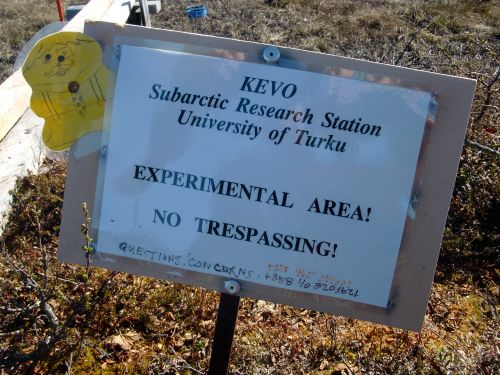
Scotty Explains Some Gas science Equipment
Kim uses a data logger that can measure various soil parameters, depending on what probe is attached. Soil pH (degree of acidity of the soil), temperature, and conductivity (measure of electrolytes in the soil) are three of the parameters she measures at each set of gas collection collars. These all provide a measure of the general soil condition, and can indicate what soil microbes may be present and/or active in the soil at that particular time.
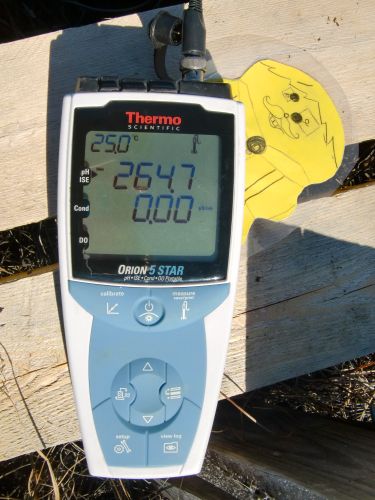
The probe she seems most proud of however is the "DIY Redox Probe." This probe measures the reduction and oxidation potential in the soil at two different depths, shallow (7 cm) and deep (14 cm). The reduction and oxidation potential measures electron flow. Electron flow is due to soil microbial activity, and it is soil microbial activity that takes in and releases the gases we are sampling.
The redox probe requires platinum, making them a very expensive piece of equipment. However, Kim and her University advisor made their own redox probe and figured out a way to splice it in to the data logger – hence the pride in this particular piece of equipment. Why is it a "DIY" Redox Probe? "Do It Yourself" of course – another example of a not-so-fancy name!
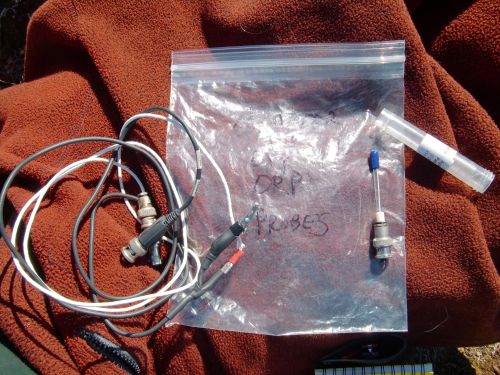
The gas collars themselves are simply 25 cm sections of PVC pipe stuck into the soil. The simple syringe is used not only to withdraw gas samples from the caps and inject them into vials, but it is also used to take air out of the vials before gas is injected into them.
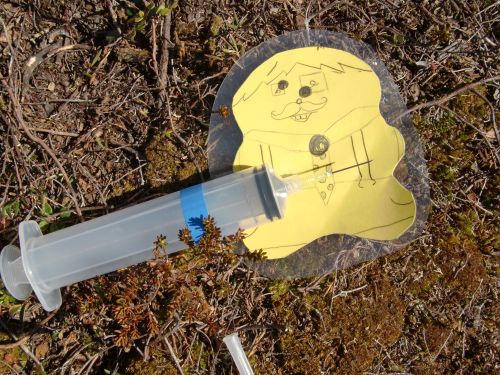
The Missing Laser
Kim was successful in getting grant funding to purchase a laser that will collect samples and analyze the gas content immediately. This will be a big change from the manual gas sampling work we are doing now, and it is really a big deal that Kim was able to get the grant. The laser by itself (without the fancy battery pack) costs $25,000! As with many things, better technology comes at a cost.
Unfortunately, Kim is having difficulty getting people back at her University in San Diego to file the necessary paperwork to actually purchase and ship the laser. This was supposed to have already happened a while ago, and the laser was supposed to be in Kevo by now. Based on other stories I have heard, this is a problem that occurs all-too-often in fieldwork: logistical problems beyond the control of the researcher can interfere with the work. You learn to be flexible, so we continue to use the lower-tech way to sample gases. It works!
One good thing about this happening in Finland, however, is that Kim can email people in San Diego about getting that laser out here. Cell phone connectivity reaches almost everywhere in the country, and Kim can use her iPhone to send messages directly from Petsikko. Scotty may yet get a chance to try that laser!
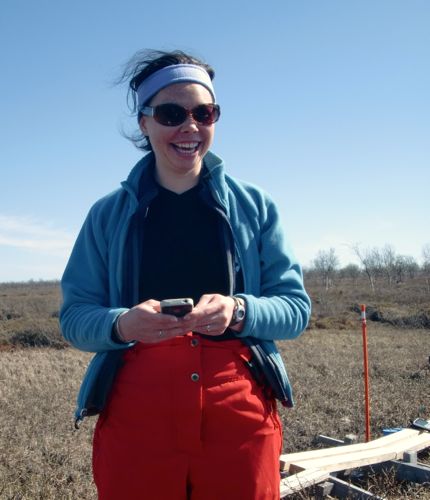
Other Necessary Equipment…
Many would not think of rubber boots as science equipment, but being comfortable and staying warm and dry out in the field all day long is important! Being British I grew up wearing wellies, or Wellington Boots. Kim recommended getting some Muck Boots, however, for my time in the Petsikko Wetlands. I heeded her advice, and I LOVE them! They are completely waterproof, even with stretchy neoprene tops. They are comfortable to wear, and to walk in.
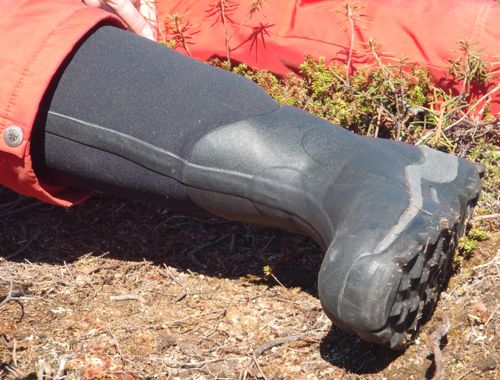
As you can tell, Scotty likes them too!
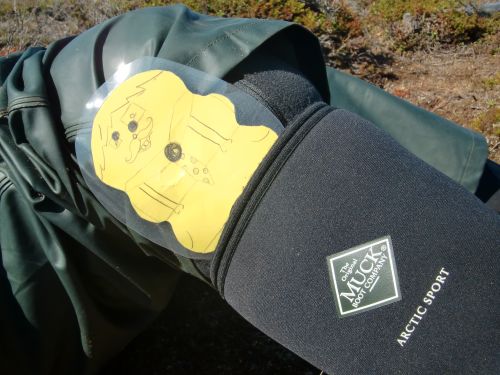
Field Day Bonus: A Challenge for You…
Another mandatory piece of equipment are the gas vials and stoppers themselves. Below are two pictures in sequence of a set of gas vials. Your first task is to figure out what the difference is between the two pictures. Then you need to explain what this difference means – what is significant about the difference. Ready? Have a look, then post your answer on the 'Ask the Team' section of this website. You will find a topic posted there, labeled "Vial Question Challenge." Click on that topic and post your answer.
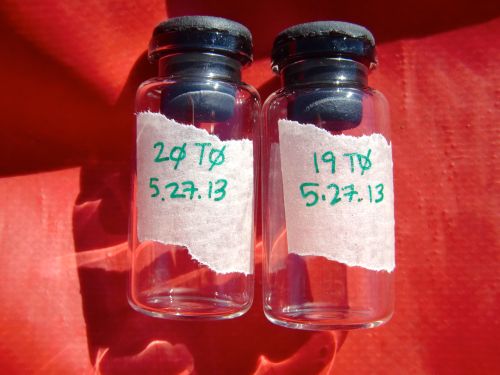
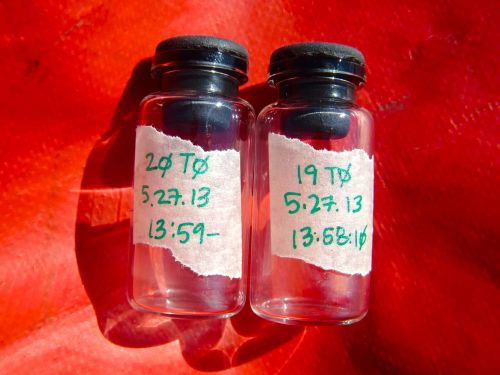
Oh, and last but not least, here is the picture of Scotty and the Pokey Stick!
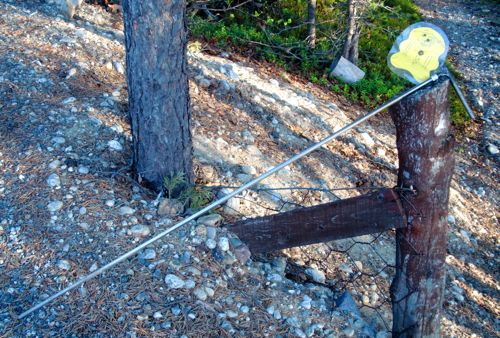


Comments